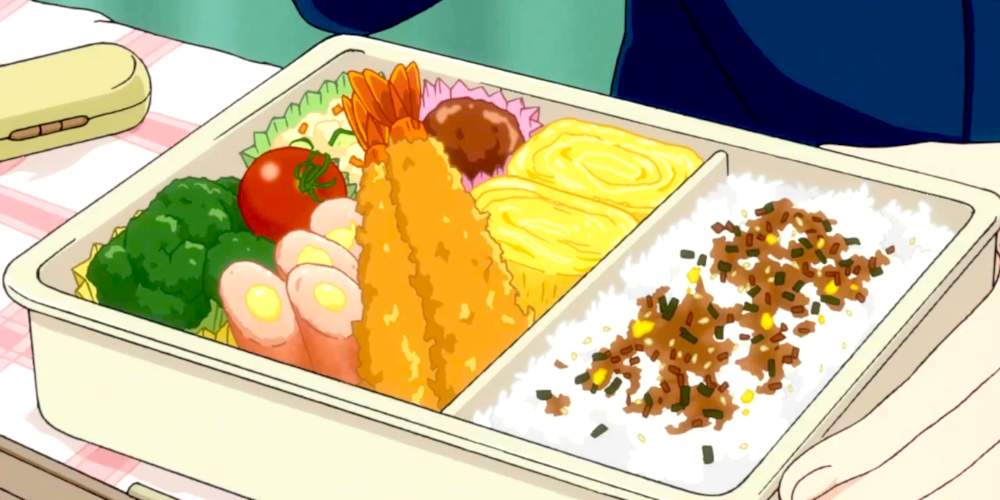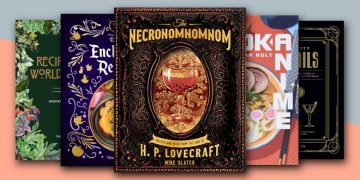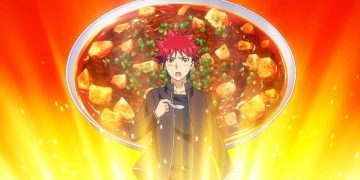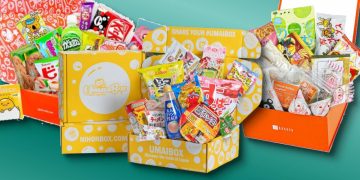The anime series Food Wars!: Shokugeki no Soma proved that food, dishes, and meals can be surprisingly captivating when paired with fun characters and stellar animation.
Action-packed cooking battles have sparked enthusiasm in food lovers around the world, who can experience these great foods and drinks in anime even if they can't in the real world.
But food in anime goes beyond just Food Wars! Shokugeki no Soma. Indeed, many anime series that don't involve cooking at all still feature tasty dishes, many of which are core to Japanese culture.
Here are some of the best foods, dishes, and meals often featured in anime series, from simple rice balls to full-blown meals.
15. Onigiri
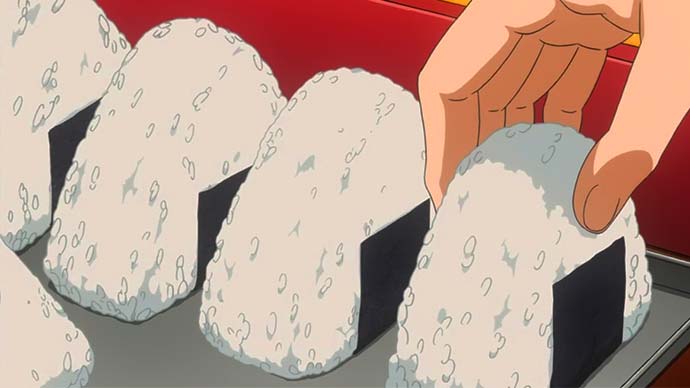
Onigiri is a classic Japanese rice ball, sometimes wrapped in nori (dried seaweed) and filled with different kinds of fillings like pickled ume, salted salmon, or bonito flakes.
Onigiri is popular throughout Japan, but is also growing in popularity around the world. You may even be able to order onigiri in Japanese restaurants in your own country.
Many anime series have featured onigiri, with one of the best-known examples in One Piece when a girl gave Zoro her self-made rice balls while he was tied to a pole. He later used a technique named "Oni Giri" (Ogre Cutter), a pun on the famed rice ball's name.
14. Sake
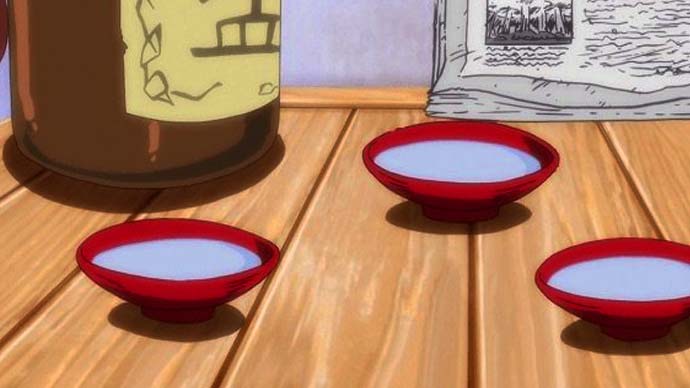
Sake is an alcoholic beverage made by fermenting rice, thus creating a rice wine. We often see sake served in a small white bottle, but sometimes it's also carried in a red gourd-shaped bottle.
In some anime series, sake sometimes grants extra powers by imbuing a "drunken fist" type of martial arts to the imbiber.
In the Naruto anime series, Rock Lee mistakenly drinks sake—after mistaking it for medicine—and fights while drunk. In One Piece, drinking a cup of sake together is a sign of one's bond as brothers.
13. Omurice
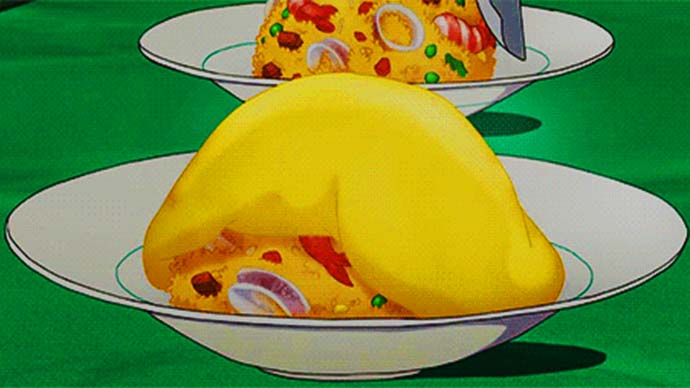
Omurice is a Japanese egg dish influenced by Western culture. It's a portmanteau of "omelet" and "rice," which makes sense given that the dish is an omelet served over rice and topped with ketchup. It's a popular dish for children and adults alike.
It has tons of variations in real-life, but anime series like Food Wars! Shokegeki no Soma, Gourmet Girl Graffiti, and Blue Exorcist have all shown their own unique takes on omurice.
12. Tamago Kake Gohan
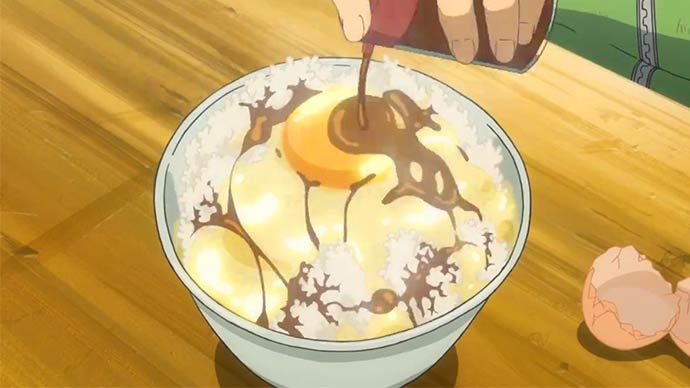
Another egg-rice dish often found in anime is tamago kake gohan. Unlike omurice, this one is simply raw egg served over rice. Seriously, all you do is break an egg over your rice bowl and mix it in, maybe adding in a few seasonings like soy sauce.
It's a simple and cheap but satisfying meal for egg lovers. The Gin no Saji anime series featured this meal prepared right in its first episode, with Yuugo feeling hesitant to eat it but finding it really tasty.
11. Dumpling
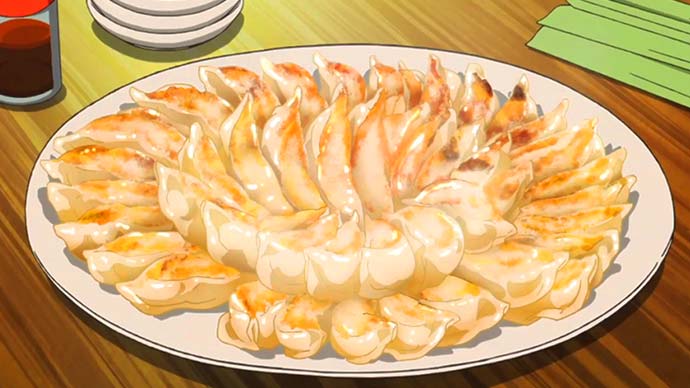
Dumpling is a general term for dishes involving minced meat and/or mixed vegetables wrapped in dough, with the dough made from flour, rice, or some other kind of starch staple.
Dumplings are popular in all parts of the world, with the most common variations in gyoza (Japan), shumai or sio-mai (China), and empanadas (Spain and other parts of Europe).
During the first episode of Virtua Fighter, Akira Yuki tries to finish fifty plates of gyoza within a time limit but is interrupted on his last two plates. In Cooking Master Boy, a dumpling competition features Jade Pheonix Dumplings, Flame Dumplings, and Rising Dragon Dumplings.
10. Dango
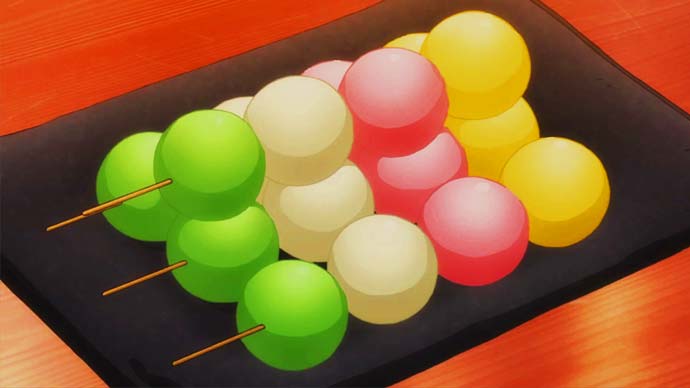
Dango is another variation of dumplings, except this one is a very specific type of sweet or savory dumpling that's made from a combination of rice flour and glutinous rice flour.
It's the iconic ball-shaped snack found in most anime series, eaten as an afternoon snack with one's favorite tea. The balls are skewered—and sometimes colored—and glazed with sweet sauce.
9. Mochi
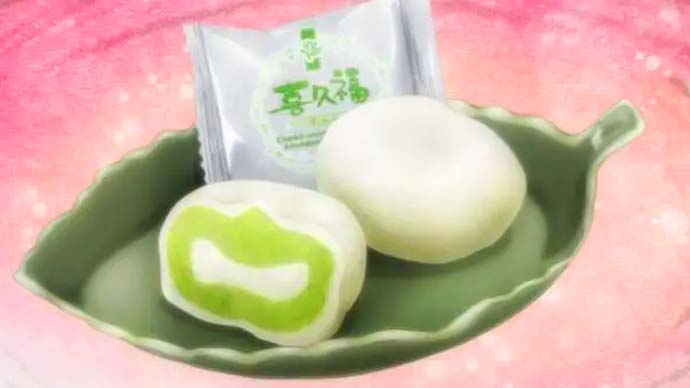
Mochi is the Japanese glutinous rice cake that's becoming a snack sensation around the world. While traditionally sold and eaten during the Japanese New Year, mochi is now available year-round.
Extremely soft but still chewy, mochi has a delightful texture that feels like you're chewing on a sticky cloud. It can be eaten as-is, but there are also stuffed mochi (called daifuku) with various fillings.
The most common mochi filling is red bean paste (anko), but there are also local variations throughout Japan, such as sakura mochi which is a pink-colored mochi wrapped in a pickled sakura leaf.
Modern takes on mochi are growing popular around the world as well, such as dessert mochi filled with flavored ice cream.
The softness of mochi was traditionally achieved using a two-man technique called mochitsuki: one person pounds the mass of glutinous rice with a heavy wooden mallet while another flips, kneads, and wets the dough by hand in between hits.
8. Dorayaki
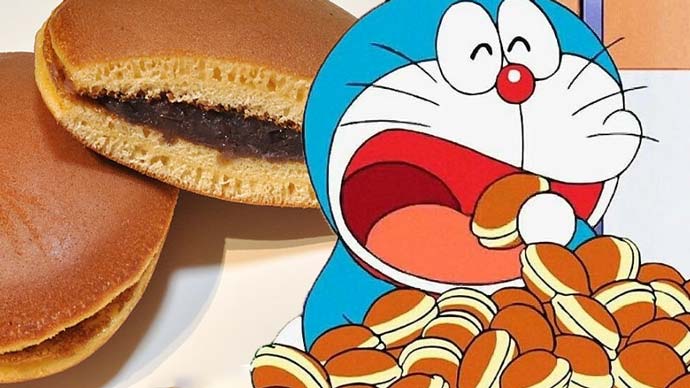
Dorayaki is a snack made of batter with a texture similar to fluffy pancakes. Because of that familiarity, dorayaki successfully spread to and became popular in many places beyond Japan.
Dorayaki consists of a red bean paste filling (anko) that's sandwiched between two pancake-like layers. Today's variations of dorayaki can also include other fillings, including chocolate.
In the classic anime Doraemon, dorayaki is Doraemon's favorite snack—and he's so addicted to it that it's actually a weakness for him.
7. Taiyaki
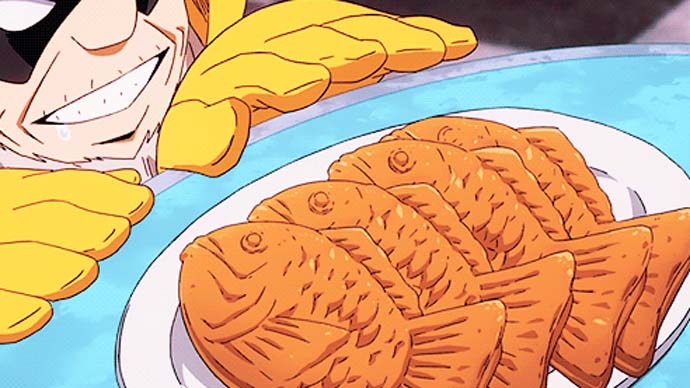
Taiyaki is another pastry snack from Japan, known for its iconic fish-shaped design and features—despite not tasting like fish or involving any fish-related ingredients at all!
The process of making taiyaki is similar to making waffles: the batter is cooked in iron molds (these just happen to be fish-shaped).
Like most Japanese pastry snacks, taiyaki is traditionally filled with red bean paste, with variations in chocolate, cheese, and even meat.
These days, taiyaki is available in many different shapes, but the original design will always be our favorite. (The fish is traditionally based on the red sea bream, which is said to bring good luck.)
6. Oden
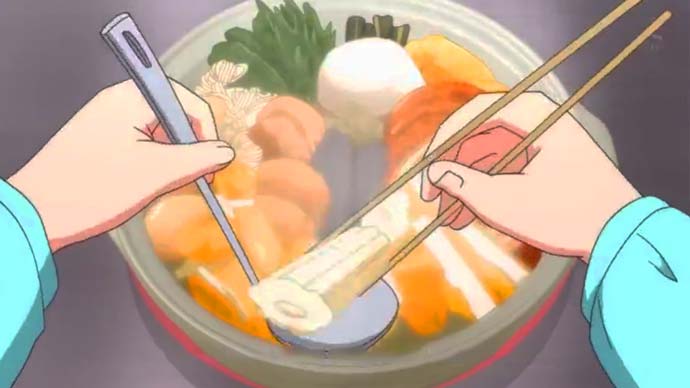
Oden is basically a hot pot meal. Yet while modern hot pot meals tend to be loaded with numerous ingredients, oden is simple and basic: boiled eggs, fishcakes, tofu, a few veggies, and a light broth.
Oden is, of course, preferred during the colder seasons, and it's best when it's served just off the boil.
In One Piece, oden was the dish served by Kozuki Oden (whose name was taken from the dish) to the Roger Pirates. Oden also appeared in the series Isekai Izakaya as the favorite dish of one Aitherian guard.
5. Japanese Curry
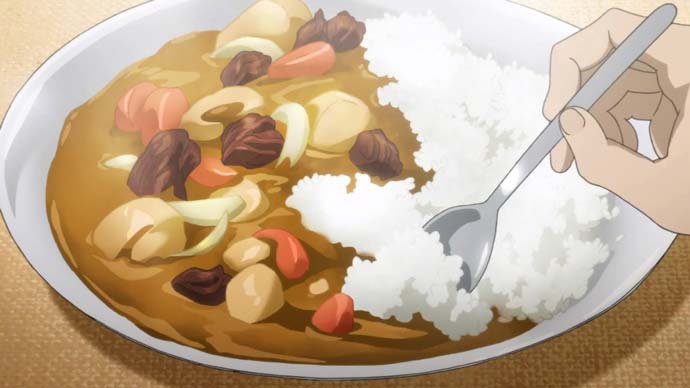
Japanese curry is a simple dish found in many anime series. It's popularly known as kare raisu (Japanese pronunciation of "curry rice") because it's usually served over rice.
Originally from India, Japanese curry has grown into a cultural staple because it's so easy to cook and only involves a few ingredients: onions, carrots, potatoes, and one's meat of choice.
It's a thick kind of curry that's richly flavored, thickened with roux, and enhanced with spices, resulting in a hearty dish that feels almost stew-like in mouthfeel.
While the dish is now common in households and cafeterias, Japanese curry was once an expensive meal only afforded to the rich due to the rarity of imported spices back in the day.
4. Ramen
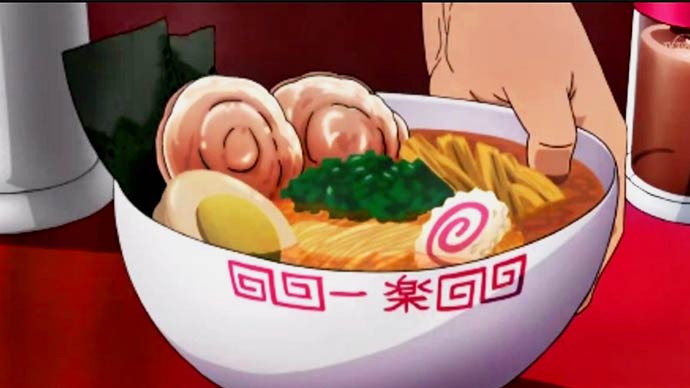
Ramen isn't just one of the most popular meals found in anime—it's popular in real-life all over the world. It's a savory Japanese noodle soup that's topped with meat and other toppings, including narutomaki, nori, and menma.
Anime often gives ramen colorful features that make it look really delicious. Ramen is Naruto's favorite food in Naruto, while the series Dr. Stone features it as a step in rebuilding the Kingdom of Science.
3. Katsudon
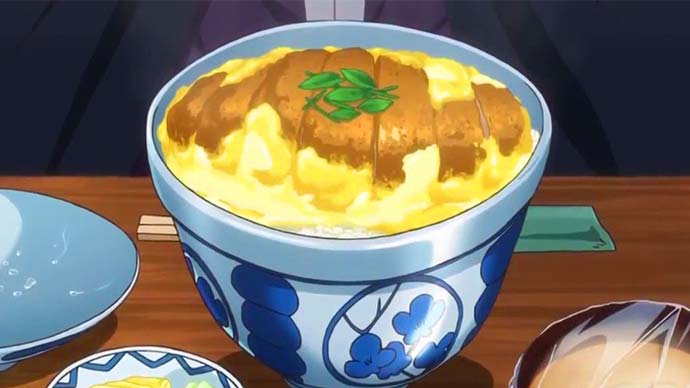
Katsudon, which is a portmanteau of "tonkatsu" (pork cutlet) and "donburi" (rice bowl dish), is a rice bowl dish topped with deep-fried breaded pork cutlet and other toppings like onions and eggs.
The series The Devil Is a Part-Timer! features katsudon as the first meal the demon lord Maou encounters in his new place called Earth. It's also an important meal for Yuri of Yuri!!! on Ice.
2. Bento Box
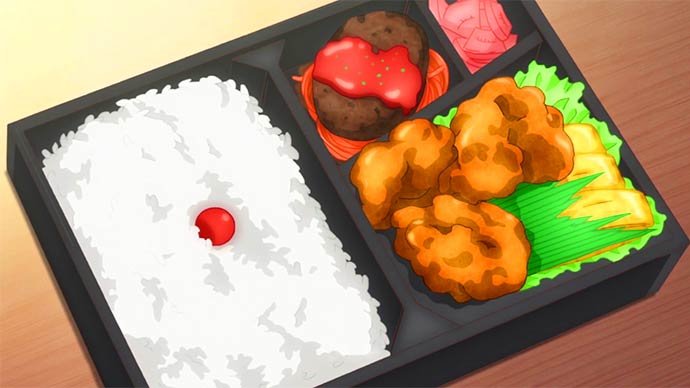
There is no specific recipe for a bento (bento box), and it can be filled with different dishes. The most common elements in a bento box are onigiri, egg rolls, maki rolls, meat slices, and fruit pieces.
Anime series often feature bento boxes during a character's lunchtime, where they share food with their peers.
Sometimes, female anime characters will prepare bento and give it to someone they like, and the receiver's acceptance signifies that they recognize the giver's feelings.
1. Sushi
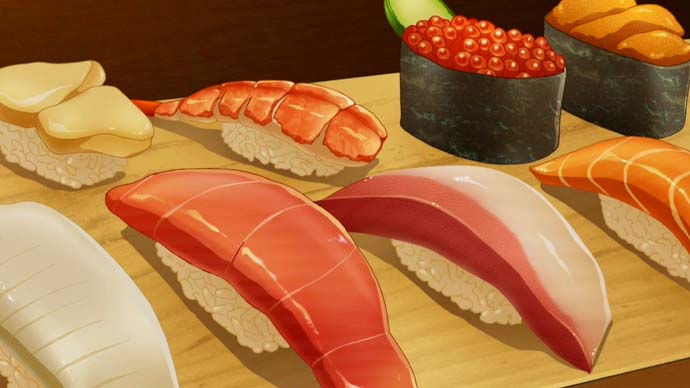
When it comes to anime food, we always think of sushi first. It's so iconic, popular, beloved by foodies around the globe, and representative of Japan's elegant cuisine.
The process of making sushi dates back many centuries, starting off as a way to preserve raw food through fermentation and ending up as what we know of as sushi today.
Modern sushi (called nigirizushi) involves raw fish on hand-pressed rice that's been seasoned with vinegar, but there are actually several different ways sushi can be served.
For example, there's rolled sushi that's encased in a sheet of nori (makizushi), the inside-out roll with rice on the outside (uramaki), sushi served in a pouch of fried tofu (inarizushi), and the bowl of rice with raw fish and vegetable toppings (chirashizushi).
Because it's so popular—both in Japan and around the world—sushi is featured in many anime series, especially during restaurant scenes where characters spend time together in an intimate setting.
